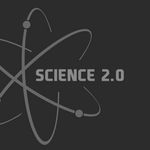Cancer Research

Scientists at Duke University have created the first map of imprinted genes throughout the human genome and they say artificial intelligence called machine learning was the key to their success. The study revealed four times as many imprinted genes as had been previously identified.
In classic genetics, children inherit two copies of a gene, one from each parent, and both actively shape how the child develops. But in imprinting, one of those copies is turned off by molecular instructions coming from either the mother or the father. This process of “imprinting” information on a gene is…

Aging may be the result of genetic changes rather than wear and tear, say Stanford researchers who have reversed the effects of aging on the skin of mice, at least for a short period, by blocking the action of a single critical protein, NF-kappa-B.
The work could one day be useful in helping older people heal from an injury as quickly as they did when they were younger, said senior author Howard Chang, MD, PhD, assistant professor of dermatology.
However, Chang and his colleagues warned their finding will likely be useful in short-term therapies in older people but not as a potential…

No other stem cell is more thoroughly understood than the blood, or hematopoietic, stem cell. These occasional and rare cells, scattered sparingly throughout the marrow and capable of replenishing an entire blood system, have been the driving force behind successful bone marrow transplants for decades.
Scientists, for the most part, have seen this as the hematopoietic stem cell’s (HSC) singular role: to remain in the bone marrow indefinitely and to replenish blood and immune system cells only when called upon.
But new research from the lab of Harvard Medical School professor of pathology…

CHICAGO – Stereoscopic digital mammography, a new diagnostic technique capable of producing three-dimensional, in-depth views of breast tissue, could significantly reduce the number of women who are recalled for additional tests following routine screening mammography. Results of a clinical trial being conducted at Emory University Breast Clinic in Atlanta were presented today at the annual meeting of the Radiological Society of North America (RSNA).
“Standard mammography is one of the most difficult radiographic exams to interpret,” said David J. Getty, Ph.D., division scientist at BBN…

A technique for controlling the magnetic properties of a commonly used blue dye could revolutionise computer processing power, according to research published recently in Advanced Materials.
Scientists have demonstrated that they can control the properties in a dye known as Metal Phthalocyanine, or MPc, with the use of magnetism.
Though this technology is still in its infancy, researchers claim that the ability to control the magnetic properties of MPc could have the potential to dramatically improve information processing in the future.
iPods, CD read/writers, and other electronic devices…

The N-Myc gene lives a double life, triggering cancer when it works with the growth-promoting protein IL-3 and causing cell suicide in the absence of IL-3
(MEMPHIS, Tenn. – Nov. 26, 2007) A gene called N-Myc leads a double life in certain white blood cells when it is overexpressed, helping to trigger a cancer called acute myeloid leukemia (AML) under some conditions while triggering apoptosis, or cell suicide, under other conditions, according to results of a mouse study done by investigators at St. Jude Children's Research Hospital.
“This discovery gives researchers an important insight…

Two transporters that deliver alternative energy sources to the eye may help delay retinal damage that can occur in diabetes, researchers say.
The transporters, SMCT1 and SMCT2, can circumvent the eye’s protective blood-retinal barrier, delivering energy sources lactate and ketone bodies to a healthy eye, says Dr. Pamela Martin, biochemist at the Medical College of Georgia.
In diabetes, characterized by plenty of glucose but the inability of cells to use it, the retina may turn to those alternate sources for survival.
“Glucose is your primary energy source,” says Dr. Martin. “But in diabetes…

ROCHESTER, Minn. -- A review of 62 Mayo Clinic patients who underwent cryoablation to treat cancerous kidney tumors shows that the patients are cancer free for up to two and a half years after having had the procedure.
Also called cryotherapy or cryosurgery, cryoablation is a procedure in which extreme cold is applied to the tumor using a cryoprobe, a hollow needle-like device filled with argon gas. The gas rapidly freezes the targeted tumor.
As this study and others continue to show, cryoablation appears to be an effective treatment for cancerous kidney tumors. But researchers caution that…

Scientists from the Helmholtz Centre for Infection Research (HZI) have discovered a class of natural substances that are produced by soil bacteria and prevent somatic cells from dividing. After years of in-depth research, the US pharmaceuticals company Bristol-Myers Squibb is now launching this agent on the American market as a treatment for cancer.
The epothilones that Prof. Gerhard Höfle and Prof. Hans Reichenbach of the HZI have been studying for more than 20 years are produced by myxobacteria living in the soil. Epothilones block the somatic cell components known as microtubules,…

Chemists from the University of Delaware, in collaboration with a colleague at the University of Wisconsin, have set a new world record for the shortest chemical bond ever recorded between two metals, in this case, two atoms of chromium.
The distance? A minuscule 1.803 Angstroms, which is on the order of a billionth of the thickness of a human hair.
The chemists weren't driven by the Guinness Book of World Records or even a friendly bet. As is often the case in science, they discovered the molecule, which has a quintuple (i.e., fivefold) bond, quite by accident.
Klaus Theopold, professor…